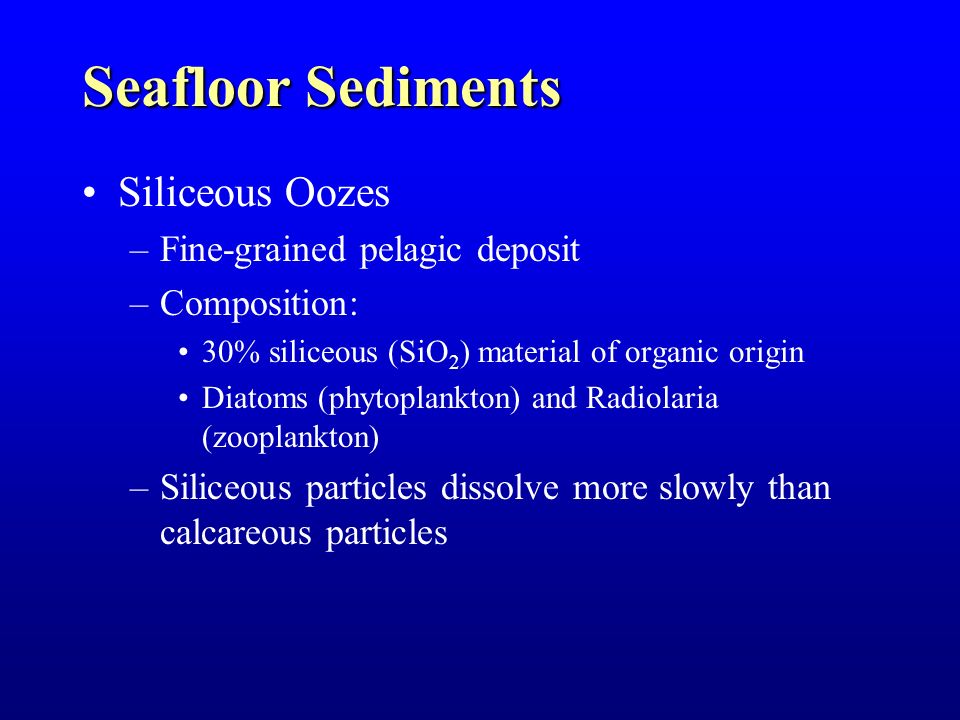It is only responsible for only 15 of the floor in the oceans.
Sea floor siliceous ooze.
How does siliceous ooze accumulate on the seafloor if silica based residues are dissolved slowly at all depths.
And recrystallizing the organically produced siliceous ooze deposits that accumulate on the present day abyssal ocean floor.
Increased primary production is encountered in zones of oceanic upwelling where nutrients released by dissolution of solid particles at depth are returned to the surface.
It is estimated that the very small tests of these organisms would take 20 to 50 years to drift down to the sea floor.
They form on areas of the seafloor distant enough from land so that the slow but steady deposition of dead microorganisms from overlying waters is not obscured by sediments washed from the land.
Siliceous oozes are largely composed of the silica based skeletons of microscopic marine.
Siliceous marine sediments are deposited on the seafloor as a siliceous ooze comprised of opal a the amorphous silica mineral hesse 1988.
The surface waters must be nutrient rich.
Siliceous pelagic marine sediments are present globally and typically dominate the biogenic component of sediments in deep ocean settings below the calcium carbonate compensation depth hesse 1988.
Where the calcareous ooze is the most common and abudant type of ocean soil in the world the siliceous ooze is the complete opposite of that.
What conditions are necessary for siliceous ooze to accumulate on the seafloor.
Siliceous ooze is a type of biogenic pelagic sediment located on the deep ocean floor siliceous oozes are the least common of the deep sea sediments and make up approximately 15 of the ocean floor.
Ooze pelagic deep sea sediment of which at least 30 percent is composed of the skeletal remains of microscopic floating organisms oozes are basically deposits of soft mud on the ocean floor.
Oozes are defined as sediments which contain at least 30 skeletal remains of pelagic microorganisms.
The bands at higher latitudes are dominated by diatoms.
Equatorial upwelling zones.
Siliceous ooze is particularly abundant on the seafloor at and at.
Once deposited on the seafloor siliceous organisms bury each other.
However they can descend more rapidly in the form of the fecal pellets of the organisms which browse on diatoms.
Siliceous ooze accumulates on the deep sea floor under zones of increased surface bioproduction where the dilution by biogenic pelagic carbonate is suppressed below the ccl.
Why doesn t siliceous ooze dissolve after it accumulates on the seafloor.
Other articles where siliceous ooze is discussed.
The tropical siliceous ooze is dominated by radiolarians.

